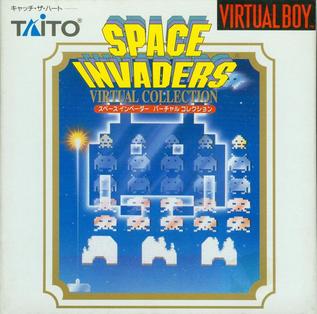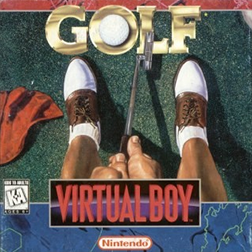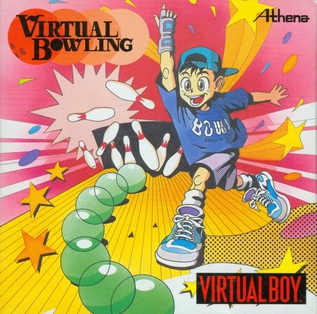
Mario Kart 64 is a 1996 kart racing game developed and published by Nintendo for the Nintendo 64 (N64). It is the second main entry in the Mario Kart series and is the successor to Super Mario Kart (1992) for the Super Nintendo Entertainment System. It was released in Japan on December 14, 1996, and in North America and Europe in 1997. It was released for the iQue Player in China on December 25, 2003. It was released on the Wii's and Wii U's Virtual Console in 2007 and 2016, and on the Nintendo Switch Online + Expansion Pack on October 25, 2021.

Mario Tennis is a 2000 sports video game developed by Camelot Software Planning and published by Nintendo for the Nintendo 64 (N64). Following Mario's Tennis, it is the second game in the Mario Tennis series. The game is known for being the introduction of Luigi's arch-rival, Waluigi, and the re-introduction of Princess Daisy and Birdo.
Nintendo Space World, formerly named Shoshinkai and Famicom Space World, was an annual video game trade show hosted by Nintendo from 1989 to 2001. Its three days of high-energy party atmosphere was the primary venue for Nintendo and its licensees to announce and demonstrate new consoles, accessories, and games. Anticipated and dissected each year with hype and exclusivity, it was a destination for the international video game press, with detailed developer interviews and technology demos.
1995 saw many sequels and prequels in video games, such as Dragon Quest VI, Mega Man 7, Super Mario World 2: Yoshi's Island, Donkey Kong Country 2: Diddy's Kong Quest, and Tekken 2, along with new titles such as Mario's Picross, Battle Arena Toshinden, Chrono Trigger, Rayman, Twisted Metal, Star Wars: Dark Forces, Destruction Derby, Wipeout and Jumping Flash!

Jack Bros. is an action video game developed and published by Atlus for the Virtual Boy, released in late 1995 in Japan and North America. It is a spin-off from Atlus' video game series Megami Tensei, and was the first entry to be released outside Japan.

Virtual Boy Wario Land is a 1995 platform video game developed and published by Nintendo for the Virtual Boy. It stars Wario, who finds himself deep underground after stumbling upon a treasure-filled cave and must find his way back to the surface. Throughout the journey, the player explores and searches for items and power-ups while fighting enemies and defeating bosses. Wario has the ability to jump between the background and foreground at certain points, making use of Virtual Boy's stereoscopic 3D effect.

Nintendo Power was a video game distribution service for Super Famicom or Game Boy operated by Nintendo that ran exclusively in Japan from 1997 until February 2007. The service allowed users to download Super Famicom or Game Boy titles onto a special flash memory cartridge for a lower price than that of a pre-written ROM cartridge.

Mario Golf is a 1999 sports game developed by Camelot Software Planning and published by Nintendo for the Nintendo 64. Mario, his friends, and his enemies play golf on a variety of Mario-themed courses. Following NES Open Tournament Golf, it is the second game in the Mario Golf series. Camelot also developed a Game Boy Color version, which adds role-playing elements.

Bomberman: Panic Bomber is a 1994 puzzle video game developed and published by Hudson Soft for the PC Engine on December 22, 1994. It was later released for the Neo Geo, Super Famicom, Sharp X68000, FM Towns, NEC PC-9821, Virtual Boy, and PlayStation Portable. It saw a re-release for the Wii and Wii U's Virtual Console services. Panic Bomber is a falling block game with the players' goal being to clear matching blocks using bombs, ensuring that their screen does not fill and that their opponents' screens do. It received mixed to positive reception, identified as a decent game by multiple critics. It has been compared to the falling block puzzle game Tetris. The Virtual Boy version received a mixed reception for its handling of the platform's visual capabilities.

SD Gundam Dimension War is a 1995 tactical role-playing video game published for the Virtual Boy in Japan by Bandai. Being the system's only licensed game in Japan, it is part of the SD Gundam series, a spin-off of the larger Gundam franchise by Sotsu and Sunrise. Players control a fleet of robots and vehicles as they set out to rid the galaxy of enemies, with gameplay involving moving robots towards opponents and engaging in combat sequences.

Virtual League Baseball is a 1995 baseball video game developed and published by Kemco for the Virtual Boy. A sequel, Virtual League Baseball 2, was planned, but later canceled.

Space Invaders Virtual Collection is a 1995 compilation video game developed and published by Taito in Japan for the Virtual Boy. It includes direct ports of the arcade game Space Invaders (1978) and its direct sequel Space Invaders Part II (1979), alongside 3D remakes that take advantage of the Virtual Boy's hardware capabilities. Both games feature a number of alternative gameplay modes, such as score attack and time attack modes.

Golf is a video game developed and published by T&E Soft for the Virtual Boy. It was released in August 1995 in Japan and by Nintendo in November 1995 in North America. Golf uses standard golf rules and is set in the fictional 18-hole Papillion Golf & Country Club. Hazards include water, sand traps, trees, and deep rough grass. It is displayed in the Virtual Boy's standard red and black color scheme with 3D effects by use of a 3D processor. It was met with critical praise for its controls and physics and mixed reviews for its graphics. Nintendo Power called it the third best Virtual Boy release of its year.

Bound High! is an unreleased action-puzzle video game that was in development by Japan System Supply and planned to be published by Nintendo on a scheduled 1996 release date exclusively for the Virtual Boy. In the game, players take control of a transforming robot named Chalvo through a series of levels riddled with hazardous obstacles to avoid across multiple worlds, while destroying or knocking out alien invaders off the area. The project was first conceptualized by designer and programmer Hideyuki Nakanishi, who wrote the idea on paper and placed it within a wall inside the offices of Japan System Supply, with his manager eventually greenlighting its development after seeing it.

V-Tetris is a 1995 puzzle video game developed by Locomotive and published by Bullet-Proof Software in Japan for the Virtual Boy. Its gameplay involves the player clearing horizontal lines by moving pieces of different shapes that descend onto the playing field by filling empty spaces in order to make completed lines disappear and gain points across three modes of play.

Virtual Lab is a 1995 falling block puzzle video game developed for the Virtual Boy. Its gameplay involves the player moving different shapes that descend onto the playing field. The goal is to erase these shapes by linking and ultimately shutting their open orifices together to make them disappear, which causes the player to gain points across multiple levels.

Virtual Fishing is a 1995 fishing video game developed by Locomotive Corporation and published by Pack-In-Video in Japan for the Virtual Boy. The player participates in a series of fishing tournaments at various different locations by catching a large number of fishes with a high average weight under a time limit. Its gameplay consists of two segments and features two additional modes of play.

Virtual Bowling is a 1995 sports video game developed and published by Athena in Japan for the Virtual Boy. In the game, the player participates in a series of bowling tournaments consisting of four 10-frame matches at various alleys against computer-controlled opponents, in order to obtain a high score and progress further. Its gameplay, featuring three modes of play, is viewed from a first-person perspective.

















